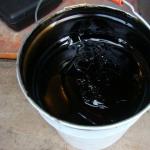Evgeniy Sedov
When your hands grow from the right place, life is more fun :)
Content
For drying fish products, a special device is provided, which is used at home. Before you buy a fish dryer, you need to familiarize yourself with all the existing models, ask the price and choose the option that is best for you in terms of cost, functionality and design. All types of dryers prevail in the free market; the housewife will definitely like some model.
What is a fish dryer
This is a special device for drying fish, which is sold in a specialized store. The main differences between the models are in a number of characteristics to simplify the choice of each housewife. Dryers differ in capacity, appearance, functions, design, and price. Choosing a drying design for cooking delicious dishes, you need to take into account that there are a number of models of Russian and foreign manufacturers, which provide a guarantee of quality, expand the capabilities of the housewife in the kitchen.
Hanging fish dryer
Having studied all types of dryers, most fishermen give preference to time-tested hanging models, which are made of a steel frame and nylon fabric. The main advantages of this material are the reliability of the design during drying, protection of fish from unwanted contact with insects, and decades of experience.
The design provides several tiers, which ensures the flow fresh air to obtain a high-quality and safe food product. For housewives such universal options are not suitable (they may seem unaesthetic), but true fishermen will be interested. To dry fish after fishing, you can use the presented hanging models.

Three Whales
This is a popular Russian manufacturer that is engaged in mass production and sale of everything necessary for hunting and fishing. If you need fish drying, here is a reliable commercially available model:
- name: Three Whales;
- price: 1,400 rubles;
- characteristics: hanging model, parameters (length, depth, height) – 120x80x40 cm, 4 fish chains, 20 hooks included;
- pros: practical model for home use By optimal price;
- cons: none.

Sport-Fish
These are imported products that are no less relevant for beginners and professional fishermen. Below is a universal model that, in addition to drying fish, can be used to dry vegetables, fruits, and mushrooms:
- name: Sport-Fish;
- price: 560 rubles;
- characteristics: hanging, 50x50x60 cm, zipper with double fastener, wire frame, 3 levels;
- Pros: convenient design for everyday outdoor use, sufficient capacity, reasonable price;
- cons: none.

Cedar
To make life easier for fishermen, a net for drying fish from the manufacturer “Kedr” has been specially developed. The design is reliable and durable, allowing you to dry fish on a long trip or in the country. Below is the most best option"for every day":
- name: Cedar 6 chains SU-02;
- price: 1,250 rubles;
- characteristics: the design is foldable, the main parameters are 100x80x75 cm, 6 chains at 2 levels, adjustable positions;
- pros: quickly assembled and disassembled, does not take up much space, is inexpensive, can be bought on sale;
- cons: none.

Electric fish dryer
All the above models have manual control, i.e. the desired result depends on the human factor. In fact, such a universal design can be reproduced at home using several layers of gauze and wooden (metal) crossbars. You not only have to catch the fish, but also hang it, and regularly monitor the natural process of its drying.
To speed up results, it is recommended to use more advanced models - electric dryers. Such modern designs are much more expensive, but as soon as possible enable the hostess to enjoy an unforgettable taste dried fish. If you are planning to purchase a fish dryer, below are several rated manufacturers and their products.

RAWMID
Models of this brand are made of stainless steel, therefore they are characterized by increased strength and for a long time services. Other advantages include the presence of a step timer and several operating modes, increased capacity with compact dimensions in case of a large catch, stylish design, quality guarantee from the manufacturer. Externally, this metal box. Here are the models you should choose:
- name: Rawmid Dream Modern DDM-11;
- price: 24,000 rubles;
- characteristics: electronic control panel, 11 removable trays, 3 temperature modes, backlight, built-in air filter, fan;
- advantages: uniform drying, work with the door open;
- cons: high cost.

The price of the above model “bites”, so buyers are looking for cheaper offers. Here is the second option of this brand, which is considered budget, more suitable for use at home:
- name: RAWMID Dream Vitamin DDV-06;
- price: 11,500 rubles;
- characteristics: 0.5 kW convection dryer with electronic control, plastic body, 6 pallets made of transparent plastic, overheating protection, timer, display, dimensions 34.5x45x31 cm;
- pros: comfortable and roomy design at the best price;
- cons: none.

ENDEVER
When choosing a fish dryer, it is worth considering another recognizable brand, stated as retail trade, and in online stores. In the latter case, order frame device possible with a good discount and fast delivery by mail. Here are the most recognizable models of this brand:
- name: ENDEVER Skyline FD-59;
- price: 2,200 rubles;
- characteristics: 0.35 kW convection dryer with electronic control, plastic body, 5 transparent plastic trays, overheat protection, timer, dimensions 27x21.5x27 cm;
- pros: budget model for everyday use, you can buy it cheap at a promotion;
- Cons: short service life of the device.

Judging by the reviews, this model is not always reliable and durable. The second no less relevant dryer offer, which will pleasantly please many customers:
- name: ENDEVER Skyline FD-58;
- price: 1,800 rubles;
- characteristics: 0.35 kW convection dryer with electronic control, plastic housing white, overheating protection, tray height adjustment, automatic fan, dimensions 26x25x18 cm;
- pros: walls made of durable plastic, original design, availability of functions, the ability to select and purchase from a photo from the catalogue;
- cons: not identified.

Miraculous
The dryer for drying fish looks like small closet, which during its operation performs the function of a heater. To save significantly on price while getting a long-lasting assistant high quality in the kitchen, it is recommended to special attention on the “Chudesnitsa” trademark and its favorite positions. So:
- name: Miracle SSH-008;
- price: 1,900 rubles;
- characteristics: mechanically controlled convection dryer with a power of 0.5 kW, temperature adjustment, 5 plastic trays, volume 17 l, dimensions 39x39x40 cm;
- pros: cheap, multifunctional model, which prevails in free sale not only in Moscow and St. Petersburg;
- cons: long process of drying fish.

Domestic models are distinguished by their practicality and durability. The second offer from this manufacturer is presented below:
- name: Miracle Lux SSH-010;
- price: 1,600 rubles;
- characteristics: mechanically controlled convection dryer with a power of 0.5 kW, maximum load 5 kg, temperature adjustment, 5 plastic trays, volume 17 l, dimensions 40x40x39 cm;
- pros: convenient design, affordable price, stylish design, compact dimensions, positive reviews buyers;
- cons: none.

Gemlux
The fish dryer is represented by mechanical and electric models, so the price range is very extensive. Before making the final choice, it is recommended to study the main parameters and characteristics of the so-called favorites, ask the price, study real reviews buyers. So:
- name: Gemlux GL-FD-01R;
- price: 3,100 rubles;
- characteristics: electronic control with LCD display, temperature range varies from +40 to +75 °C, operating time 48 hours, overheating protection system;
- pros: fully corresponds to the stated price (optimal budget option);
- disadvantages: cost, lack of operating modes, not always positive reviews on thematic forums.

Another universal dryer from this manufacturer. The model is useful not only for drying fish, but also for drying mushrooms, fruits, and vegetables:
- name: Gemlux GL-FD-800D;
- price: 12,000 rubles;
- characteristics: black, power 800 W, 8 sections, several protection circuits, presence of a timer and temperature control function;
- pros: convenience, speed of cooking fish;
- cons: high price.

How to choose a fish dryer
Many housewives strive to buy a dryer cheaply, but this indicator should not become the main selection criterion. The main thing is to study the functions of the cabinet, determine the dimensions and roughly imagine the location of its future storage. Only in this case will the purchase be successful, and inconvenient equipment will not appear in the kitchen - bulky and, in fact, useless. Here are the main selection criteria:
- Device features. Mechanical, manual and electric dryers. The last option can easily be called the most progressive, since it simplifies the housewife’s work and reduces the time interval for obtaining dried fish. It is important to understand that such structures will cost an order of magnitude more.
- Functions. The more additional functions has a dryer, the more it will cost. It is important to understand that the presence of buttons does not indicate the versatility of the selected model; some of them may remain unused throughout its service life. So it won’t hurt to read the instructions first.
- Design. In this matter, it is advisable to proceed from the taste preferences of the hostess. Models are found round, oval, rectangular shape, have one or more tiers. To place the structure in the kitchen, you need to study the parameters (height, width, depth, length) and dimensions in advance.
- Manufacturer. Most buyers trust imported products, but also Russian manufacturers are not inferior in quality, functions and service life. There is an extensive list brands, which are engaged in serial production of dryers. Reviews about their products also have a positive content.
- Price. This selection criterion depends on a number of indicators. If you buy products foreign manufacturer, overpriced. When choosing a dryer from a domestic manufacturer, you can save on the purchase, but at the same time not lose at all in terms of quality.
Any self-respecting fisherman cannot imagine his life without dried fish. It is considered a kind of trophy, because it was not only caught independently, but also fished independently at home? This process requires special skill.
How to dry fish correctly
To prevent flies or other insects from landing? To do this, it is necessary to properly prepare it before this process:
- It is necessary to salt the fish until it becomes translucent.
- When soaking a salted product, it is recommended to add 50 to 150 grams of vinegar to the water (this substance repels flies, although it is not always effective).
- For drying, it is best to take not too much big fish because it dries faster and various insects They are not so willing to catch fish that are almost ready.
- If you nevertheless decide to take large prey for drying, it is recommended to remove all the intestines from it and remove the gills.
By following this plan, you will slightly increase the chances of stopping flies from landing on your fish, but you will not be able to get rid of them 100% of the time.
After this, the product is hung out in the open air and dried for a week, up to ten days.
How to dry fish at home?
Not every fisherman has a special place for drying fish. Accordingly, not everyone knows how to dry fish at home.
To do this efficiently, you need to stock up on seasonings such as bay leaf, salt and ground black pepper. In addition, you need to prepare thick foil and an oven.
So, how to properly dry fish at home? After preparing all the above things, you need to follow this plan:
- The fish needs to be washed, dried with a paper napkin, all the intestines removed, and then cuts made on it. After completing these steps, the product is sprinkled with salt and pepper and placed under pressure. Next, the fish must be thoroughly washed to remove salt under running water and dry.
- After drying all the fish, you need to preheat the oven and place foil on a baking sheet. All the prey is laid out on it; be sure to make sure that the heads are turned in one direction. During the drying process, the oven door needs to be opened slightly by about 50-70 millimeters. The temperature should be no more than 50 degrees. After two hours, the fish heads are covered with foil, and the fish itself continues to dry for three or four hours.
- Then the product is taken out of the oven, strung on an iron wire or thread, and then hung in the fresh air, in an apartment - this could be a balcony. It dries there for at least two days.
IN winter time After removing the fish from the oven, you can hang it on a rope or wire above the stove.

What is a hanging fish dryer and what is it for?
Drying fish on a rope or wire is a fairly simple and traditional method, but it does not prevent flies from damaging the product. But a hanging fish dryer can protect it from this harmful influence.
The hanging dryer is presented in the form of walls made of gauze or mesh. Such “walls” allow air to pass through and do not slow down the drying process of the fish. As a rule, inside such dryers there is hanging device, consisting of slats with guy wires and chains. Hooks for hanging fish are attached to these chains; when purchasing such a dryer, they are included in the kit.
To install a dryer of this type, you simply need to stretch a guy wire on neighboring trees or simply drive in stakes. If fish is dried in an apartment, you can purchase a special frame or build it yourself.

Drying fish in the summer
How to dry fish in summer? This process in warm time years has almost no differences from its drying in winter period. The only difference is that in summer the product can be taken out onto the balcony or (in a private house) outside. In winter, it is necessary to dry the fish over the stove, having previously completed the above procedure using the oven.
Drying fish is most often practiced in summer, since winter fishing is not as popular as in the warm season.

Drying fish on the balcony
For apartment residents, the process of drying river mining becomes a little more complicated, since open air not so much. How to dry fish on the balcony? You need to do the following:
- The fish must be washed thoroughly and the intestines removed. Under no circumstances should scales be removed, as this will attract flies and cause too much quick drying prey (this may affect its further taste).
- A shallow but long cut must be made on the back of each fish, approximately from the head to the tail.
- Next, the product is salted in a vessel. It is best to choose enameled containers and coarse salt. The latter is taken at the rate of 20% of the weight of the entire fish. If desired, you can add bay leaf and black pepper to the salt.
- The fish is transferred to another container in layers, each layer is carefully covered with salt. You also need to rub the product inside.
- A weight is placed on top of the fish and the whole thing is placed in a cool place for several days. It is recommended to use a refrigerator.
- After salting, the fish must be washed and dried.
- Next, it is hung on the balcony (thread or wire is used). How to dry fish without landing a fly? It is best to treat each with 3% vinegar.
The fish takes about a week to dry.

How to dry fish with intestines?
Whether to dry fish with intestines or not is a matter of taste. It is worth noting that if the product has been dried along with the insides, then its taste may exhibit a certain bitterness, which is not to everyone’s taste.
Drying fish with intestines occurs in the same way as all the above methods, the only difference is that you do not need to remove all the contents of its belly.
On the one hand, removing the entrails of fish is a very difficult matter, but if the fisherman does not want to get a dried product with a bitter aftertaste, then it is better not to shirk this matter.

What is a fish drying box?
How to dry fish without landing a fly? To this end optimal solution will be the use of a box for drying fish.
You can buy it or make it with my own hands. Creating a box yourself will cost about half as much.
The optimal size of the frame of a box for drying fish is 1 * 1.10 meters, depth - 0.5 meters. Most suitable material- this is a tree (its species does not matter).
To create such a box, you need to do the following:
- Mark the timber and cut it using electric jigsaw. Then, using a screwdriver, angles and screws, assemble the frame.
- Stiffening ribs are attached on all sides.
- A cable is attached to the side walls (the fish is dried on it).
- Then you need to treat the box with insect repellent.
- It must be absorbed and dry, and after that the box is opened with varnish. It must be applied in two layers with an interval of 4 hours.
- At the bottom of the box you need to install special spacing.
- The base of the door must be sealed with a sealant.
After completing these steps, you will receive a ready-made box for drying fish, where no insects can penetrate.

The reader already knows how to dry fish without a fly landing. Now is the time to talk about how to store it properly.
There are several tips to help preserve dried fish for as long as possible:
- Before putting the fish in a bag for further storage, you need to wipe it thoroughly and put twigs from the fish in the belly. coniferous tree, if it is not available, plain paper will do;
- In the hot season, it is recommended to place nettles on top of dried fish; this will increase its shelf life several times.
Here we told you how to dry fish at home. By fulfilling all the requirements, you will receive a high-quality and tasty product. Bon appetit!
Today I decided to talk about one of my purchases last year. A very specific thing, but very useful.
So. Vertical three-tier fish dryer. (suitable for drying not only fish, but also other products)
In the review I’ll tell you about the dryer itself, as well as my recipe for drying fish. Be careful, there is 18+ content
First of all, what is this dryer for? And it is needed for, as the name suggests, drying and preparing dried fish. The dryer has three undeniable advantages, which make it quite useful.
The first plus: the dryer allows you to save space. It is ergonomic. Allows relatively small amounts of space to dry large number fish.
The second plus: despite its dimensions, when folded, the dryer takes up very little space.
Third plus: the mesh design completely eliminates access various flies and other scavengers for dried fish. There is no need to fence boxes, hang gauze or look for places where the fish will dry and flies will not get to it.
Additional information
Perhaps these dryers are cheaper in your city. Check with local fishing stores. For example, I have such dryers sold for a price comparable to the one being reviewed, but with dimensions of 25x25cm.
I used to dry fish the old fashioned way. On a stretched wire and wrapped in gauze. Like this:

The disadvantage of this method is that the flies climb to the raw fish and lay larvae. Even gauze does not always save you if you have wrapped the fish poorly. Therefore, when I came across the option of buying a folding drying rack, I bought it without hesitation:

Now the price, unfortunately, is higher than last year. But you can look in other stores or wait for sales.
The dryer comes from the store in a package:

When folded it is quite compact:

Dryer dimensions 35x35cm:


When unfolded, the height of the dryer is about 57cm (plus the length of the ropes):

This is what the dryer looks like in working condition:

The material of the dryer is some kind of fine synthetic mesh. Quite thick and strong. Stainless steel frame. The lock is also made of synthetics. There are two sliders:

Easy to open:

When open, there is access to three shelves on which fish can be placed for drying.

Afterwards it closes, and not a single fly or other nasty thing will get close to the fish.
Well, now I’ll show you exactly how I cook and dry fish. To be consistent. I'll start from the very beginning and point by point:
Point one:
Early in the morning, we go fishing. Preferably away from the city, to places where there are few fishermen and the fish are not caught in Chinese nets. We have a good time fishing. Let's catch fish. Let's rest. Let's sunbathe. We get burned.





On the day of fishing the weather was changeable. Either it's hot or it's raining. But in the end, about 3 kg of large roach was caught:


Point two:
I bring the roach home. I'm cleaning. I'll gut it. I cut off the heads and cut them along the spine into two halves:



I put the cut fish in the prepared container.

I add salt, sugar and red pepper. The recipe is simple:
For 500 grams of fish I use 1 tbsp. level spoon of salt, 1 tbsp. a spoonful of sugar, 0.2 teaspoons of hot red pepper.


Mix thoroughly. I close the container with a lid and put it in the refrigerator for two days for salting:


And I go to coat my neck, face and hands with cream. Because everything that was open burned down:

Point three:
After two days I take the fish out of the refrigerator. I lay out the fish in three layers on a drying rack already hung outside and close it:


As you can see, the fish is open on all sides to fresh air, so the drying process takes place without any problems, stagnation, etc.
Point four:
3 days have passed since the fish was placed outside on the dryer. It's time to harvest. More precisely, it's time to pull out the fish. She's ready:


The dryer worked as it should. The fish was dried evenly on all sides. No flies got to the fish. The fish looks very appetizing:


Point five. Most responsible:
Let's go to the store. We buy beer. And we start eating fish:

In my case, one and a half liters of dark, unfiltered Bruge Dark fit seamlessly into a calm Saturday evening with my family. (Please don't forget that excessive use alcoholic beverages can have a detrimental effect on your health. But consumption in moderation and not very often is completely acceptable):


While talking, unnoticed, almost all the fish was eaten by me, my wife and three children. So I'll go fishing again this weekend.
Conclusion:
Maybe you forgot, but this was a review of a fish dryer. The product is definitely necessary and useful. Very helpful for those who like to exercise homemade dried fish. I have never regretted buying it. Like simple design, but it's worth the money. And I can definitely recommend it for purchase.
That's all. I wish everyone a good weekend and a good summer. I'm planning to buy +71 Add to favorites I liked the review +109 +200
How to properly dry fish in a dryer and how to make it yourself if necessary? What are the best ways to dry fish to give it best taste? How to avoid the most common mistakes when using these technologies? We’ll talk about all this in more detail in this issue and immediately please leave a comment at the bottom of the page to understand how successful the material turned out.
What types of dryers are there and what are they for?

What unites them all presence of walls made of mesh or gauze, which prevents contact of flies and their larvae with the fish, and allows the air to do its job. As well as the presence of a door for loading and unloading catch, shelves, hooks or wires for placing fish in the correct position.
It is precisely this opportunity to preserve your catch from infection with larvae and subsequent spoilage of products that lies in the advantage of using various types of dryers over traditional way drying fish (by hanging it on a rope or wire somewhere under a canopy, in the attic or balcony).
Making a dryer with your own hands
Modern online stores, as well as fishing equipment departments in sports stores and in the markets they present to the buyer many different models of fish dryers in various options value for money.
But with all the variety of products offered, it is not always possible to choose a dryer model that suits the needs of a particular fisherman. After all, the catches of different fishermen can vary dramatically in the number and size of fish caught. The home conditions in which fish will be dried also vary. Therefore, many commercial fishermen adjust the parameters of the created device to their needs.
First of all, you need to decide where exactly will the drying take place?. If under a canopy or in the attic of a private house, there are no problems with the size. If it is in one of the rooms, on the balcony or loggia of the apartment, then the dimensions of the future dryer must be calculated based on the possibility of placing it in these rooms for drying and subsequent storage. You also need to keep in mind the size and number of fish caught in previous fishing. Or calculate these parameters for future catches.
 If you have very little space, you can consider the options of folding and hanging dryers.
If you have very little space, you can consider the options of folding and hanging dryers. After determining the required dimensions, you need to decide on the materials for manufacturing. They can also be very diverse. For the frame and door, they usually use bars, slats or boards left over from construction or repairs, the remains of an aluminum profile or corner - that is, any suitable durable materials.
- A door is hung on the assembled frame.
- The opening is hermetically sealed to prevent the entry of insects.
- A net (preferably mosquito net) is tightly attached to the walls.
- Many people also put a net on the ceiling, but this is fundamentally wrong, since the deposited fly larvae can penetrate the cells and infect the catch. Therefore, the ceiling must be made solid, preferably from plywood or plastic sheets.
- A tray is placed at the bottom to promptly remove draining fish oil.
- After this, shelves are made inside the dryer or several rows of wire with hooks are stretched (in accordance with the expected size of the fish). The dryer is ready!
Below are some examples of the original creativity of our anglers.
As they say, it’s better to see once than to hear 100 times. Therefore, we invite you to watch the video from detailed description making a dryer with your own hands.
How and how long to dry fish
Drying time and the choice of technology largely depend on the type and size of the fish caught, as well as on the gastronomic preferences of the fisherman himself.
 Before drying fish, it is necessary to salt it. Small fish can be salted whole. The larger one must first be gutted and cuts made along the back. And the biggest one will be needed cut into pieces, suitable for the size of the salting container.
Before drying fish, it is necessary to salt it. Small fish can be salted whole. The larger one must first be gutted and cuts made along the back. And the biggest one will be needed cut into pieces, suitable for the size of the salting container. The duration of salting again depends on the size of the fish and the taste preferences of the fisherman - the longer it is salted, the saltier the fish will be. On average there is enough 2-6 days. After which the fish is taken out, washed with running water and placed in a bowl with clean water for soaking and removing excess salt.
 After soaking, the fish must be dried by placing it on a simple towel and placing it in a constructed dryer.
After soaking, the fish must be dried by placing it on a simple towel and placing it in a constructed dryer. Exists two ways to hang fish on hooks or ropes of the dryer - by the head (through the eyes) and by the tail (after making a hole in the right place in the fish’s body with an awl).
Each method has its pros and cons. For example, if you hang it by the tail, the fat will drain through the mouth and the fish may come out a little dry. And if you eat it by the head, the remaining fat can give the meat a unique taste. In general, each fisherman chooses the hanging method himself in accordance with the breed of fish and his experience and taste preferences.
After hanging, the dryer is placed out of range sun rays . Best in a draft. The catch takes about a week to dry. Samples are taken starting with the smallest specimens.
Possible errors
When salting and drying fish, you should avoid the most common mistakes.
- Salt for pickling should be regular, coarsely ground. No way not iodized! Its use is guaranteed to spoil appearance and the taste of dried fish.
- There is no need to wash the fish immediately before salting (it is washed only before soaking), otherwise it will inevitably become dry.
- Herbivorous fish cannot be salted without being gutted in hot weather. The algae remaining in its interior will begin to rot - the fish will develop a bitter taste or will completely deteriorate.
- When placing fish in the dryer, ensure that they didn't touch. This will prevent even drying.
Fish dryers of various variations are, of course, sold in the store. But doing something with your own hands is pride for a real man, and even more so for a fisherman. You can dry your catch without a special design, but all the “old-fashioned” options (on clotheslines, on the balcony, in the attic) do not exclude the possibility of contamination of the product.
We make a fish dryer ourselves
First of all, you need to decide what kind of dryer you need and what materials you have for making it. The “insides” of the dryer - strings and hooks - are not difficult to manufacture. They can be quickly constructed from:
- wires;
- clothesline;
- strong threads twisted in several rows.
It is much more important to properly make the dryer body itself, which will prevent flies and wasps from getting inside.
From plastic boxes
To make such a dryer, absolutely any plastic box, arbitrary shape and size. Since this material does not allow air to pass through, this structure will need to be equipped with a hood. In addition, you will need:
- Corners (plastic or duralumin).
- Glue or liquid nails.
- Fasteners (bolts).
There are enough tools:
- jigsaw or stationery knife;
- screwdriver.
The advantages of this design are that it is very easy both to operate and to assemble. In addition, it is easy to disassemble and wash.
From plastic panels and corners
 The construction of such a dryer is similar in some respects to the installation of the above-described model. The only difference is that in the first case we take a ready-made box, and in the second we make it ourselves according to the dimensions we need.
The construction of such a dryer is similar in some respects to the installation of the above-described model. The only difference is that in the first case we take a ready-made box, and in the second we make it ourselves according to the dimensions we need.
For the design you will need:
- Plastic panels.
- Guides, corners, finishing strips.
- Liquid nails.
- Wire for rods.
- Hood.
- Mesh to cover the inlet.
From wooden blocks
The simplest and most reliable thing is a fish dryer made from wooden blocks. To make it you will need:
- bars;
- self-tapping screws;
- mosquito net or tulle.
Other options
List everything possible options the structures make no sense. But to bring you up to speed a little, let’s simply divide dryers into categories:
- Frame and frameless.
- Foldable and one-piece construction.
- Mobile and stationary.
Almost any of them can be built with your own hands.
Dryer installation
Let's look at the assembly of a dryer from a plastic box in more detail:

Assembling a dryer from plastic panels and corners requires the following actions:
- We measure the height of our box on a plastic panel and cut off as many strips as we need. It’s easy to count them: divide the estimated width and height of the box by the dimensions of the panel and round this number;
- cut out the parts for the bottom and lid of the box in the same way;
- assembly of plastic panels is very simple: the first panel is fixed in a corner of the required length, all the others are glued to it in the area of the grooves using liquid nails;
- as soon as the side is assembled, we secure the top with a finishing strip, and the bottom and second edge with a corner;
- in the same way we assemble two more sides of the box, and then the panels of the bottom of the structure;
- Next we complete the assembly of the last side. We remember that there should be a finishing strip on top everywhere;
- We also glue the lid parts together and decorate the edges with strips;
- then everything follows the same diagram as in the installation of the first dryer: hood, rods.
Assembling a dryer from wooden blocks involves the following steps:

Any fish dryer can be made at home. The main thing is availability necessary materials and tools. When choosing a model, be guided by how it will be used: on the balcony, in the garage, under open air. It depends on this whether the dryer will have any additional structures: legs, hanging mounts, fan, etc.


















